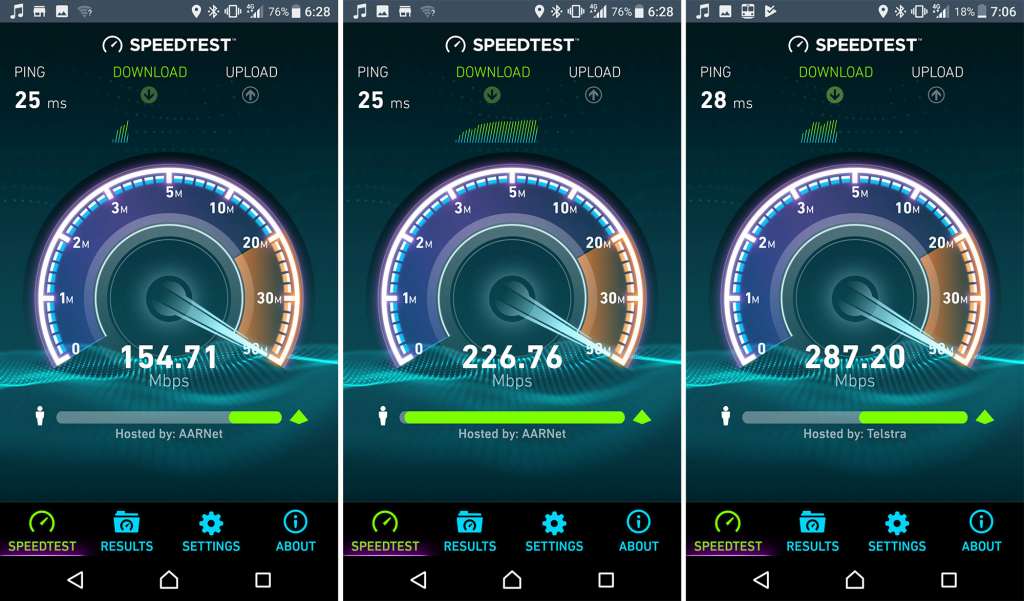The release of unlimited plans last week sparked curiosity, interest, and then outrage. Unlimited is awesome, but unlimited with restrictions… less so. Is 2018’s definition of unlimited mobile data fair?
The deal
The idea of a “fair go” is about as Australian as it gets, but it’s not something all Australians would argue we’ve been seeing in the mobile data world.
We all consume vast quantities of data on our phones, and the faster a phone gets and the more features it sports, the more data we take in and consume. Some of us take in so much that we go above and beyond the data allowances that our phone plans come with, adding more cost to our plans and leaving us with “bill shock”, a bill that is beyond what we expected. We’ve been stung before with roaming costs on a holiday, and the same can happen inside the country when you download too much.
But telcos have a plan to help fix this: unlimited data.
The idea is simple, with a plan that gives you unlimited data and prevents bill shock. You’re given access to a never-ending supply of data for you to use with as you see fit. You can use it for social, for email, for web surfing, for watching content, for anything, and you get it over 4G.
And that sounds great, if it weren’t for the catch.
The catch
While Telstra’s and Vodafone’s “unlimited” plans are both unlimited in data, they limit on speed, placing a handicap on performance once you go over a certain amount.
For Telstra’s option, your first 40GB will arrive at whatever speed you connect to Telstra’s network on, but after your first 40GB is downloaded per month, the rest of your unlimited data will come in at that maximum of 1.5Mbps
On Vodafone, you get a few more options, and depending on the amount you spend, you’ll get either 30GB, 60GB, or 100GB monthly (or a little more during its initial promo period) before the slowdown arrives, providing the rest of your unlimited data at 1.5Mbps.
That might not seem like a big deal, but 1.5Mbps is the speed of ADSL1, a technology few Australians are using in this day and age. It doesn’t quite equate to megabytes, even if the “Mbps” seems like “MB/s”, though they’re not the same at all. Rather, one megabit (Mbps) equates to 0.125 megabytes (MB) per second (to calculate MB/s, divide Mbps by 8), meaning a 1.5Mbps speed is slow, especially in comparison to the speeds 4G phones can normally get, ranging from a little below 50Mbps (6MB/s) all the way through to 600Mbps (75MB/s), and up to 1200Mbps (150MB/s).

That 1.5 megabit catch is there to prevent downloaders from going crazy, because it means folks who tether their phone to their computer and expect the super fast mobile 4G speeds for unlimited downloads won’t be able to take advantage of unlimited data.
But the 1.5 megabit catch could is raising questions for all users, not just downloaders, because the moment you go over your unlimited speed allotment, you’ll get the rest of your unlimited data at a slower speed.
We have no doubt that will bother quite a few people, but the question remains, will they see it?
Here at Pickr, we decided to put that to the test, getting two phones to talk to two networks at various times of the day to see what they connect at for typical activities.
A question of speed
Typically when we review products, we conduct speed tests, which are exactly what they sound like: tests that aim to prove how fast or slow a device is. Speed tests are a handy way for us to prove the veracity of claims from mobile manufacturers and telcos, such as the idea that a phone can hit 1Gbps, the fabled 1000 megabits of speed that Australian telcos and a select number of phones can theoretically hit.
But speed tests push a phone and its modem to its limits, and while they’re fun to do to prove a speed, you’re unlikely to really need to use that modem at its full limit all the time. What’s more, if you did try to do that — and if the phone needed to all the time — you’d drain the battery so quickly (alongside your data) that it wouldn’t matter.
So instead of doing a speed test, we took the opportunity to test with real-time data measurements, discovering how fast our phones were connecting to the telcos offering the “unlimited” plans, Telstra and Vodafone.

Real-time data measurements
We tested in five locations around the Sydney CBD, testing on two different devices that we had available to us and could display the information we needed, specifically the working connection speed. For this test, the Huawei P20 Pro is connected to Telstra, while the Oppo R11s is connected to Vodafone, and the data speed is measured in either bytes, kilobytes, or megabytes per second. Not quite the same as megabits, but we’ll do the math and conversions so you don’t have to.
We’ve used these phones specifically because they can be configured to report data speeds in the status bar of the phone, making it easier to see what the connection is doing.
To try and keep things as kosher as possible, our real-time data measurements had streaming music running the entire time (Apple Music on the P20 Pro connected to Telstra, Google Play Music on the Oppo R11s connected to Vodafone), while we surfed the web or checked out social media feeds. That combination of activities felt like a good general guide for what someone might be using their phone for while in transit, and if a speed handicap brought down to 1.5 megabit would actually affect them in real life.
These are samples of our speed, and they’re not necessarily what you’ll see, but examples of the sorts of traffic your phone will do for general use, rather than achieving the highest speed all the time.
The tests started in Glebe, the end of Sydney’s Inner West as it starts to shift to the city, where Telstra and Vodafone ranged between speeds of 91 bytes per second (B/s) and 413 kilobytes per second (KB/s). That’s around 3.6 megabit needed here for comfortable web browsing, social, and music streaming.
Next up is Broadway as we start to head to down to the city, and our social and music connected smartphones were downloading at between 231KB/s and 795KB/s. Unsurprisingly, that’s higher than the 1.5 megabit cap, kicking it at 6.36 megabits.
Central’s our next stop to work, and while walking through the tunnel meant we weren’t flicking through Instagram or Twitter as much, we captured a few download speeds here on each phone, delivering traffic as high as 272KB/s when we grabbed those screens. While we probably saw higher speeds, 272KB/s is still higher than 1.5 megabit, clocking in at 2.17Mbps.
We took a train, as we so regularly do at Central, and when we arrived at Wynyard, we captured the download rate there. Train stations in Sydney tend to be quite lacklustre for download speeds (especially at Town Hall), but Wynyard achieved speeds as high as 754KB/s, or 6.03 megabits for a comfortable uninterrupted mobile broadband experience.
Finally, we arrived at North Sydney, which saw us mostly listening to music and skipping the social side of things, the downloads just trickling in. A basic test, this one delivered speeds around 52 to 72KB/s, which clocks in at 0.57 megabit.
Unlimited vs “unlimited”
That test isn’t conclusive as everyone’s experience will be different, but it does suggest that 1.5 megabits isn’t a fast enough throttle level for telcos to drop back to.
Based on what we’re seeing, the amount to properly keep using social, web browsing, emails, and streaming music would be closer to the 5 to 8 mark, with a drop to 1.5 megabit likely delivering a severely compromised and slow experience disconnected with the idea of what mobile broadband typically delivers.
And that’s the problem, because even though the download amount is definitely unlimited, the experience will be likely be limited when throttled to 1.5 megabit, if our test is any indicator.
Frankly, we’re more than a little concerned if it will affect VoLTE, the voice technology that works over 4G networks, let alone how it would slow down media uploads to Instagram, Facebook, and Snapchat.
Is it worth it?
The biggest question looming over the new unlimited plans is the obvious one: is it worth it?
Honestly, we’re not sure.
In theory, if you frequently see bill shock because your data bills are spiking from how many downloads you’re accumulating monthly, both Telstra’s and Vodafone’s unlimited plans could be a handy way for you to deal with these billing issues, throttling you when you go “over”.
But if you desire a mobile broadband experience that keeps mobile broadband performing at the speeds you’re used to, the unlimited plans may not be ideal for you.
Ultimately, this all comes down to how many downloads you regularly chew through monthly on your mobile. We don’t usually go beyond our 15GB per month, and so 30 or 40GB is actually a decent amount to work with.
However, if that’s small change for you and your mobile regularly goes beyond that bandwidth, we’d take a long hard look at the plans to consider the option: is it worth having your data throttled to limit the bill shock, or would you prefer an unlimited mobile broadband experience?
Answer that and you’ll know exactly what you should pick.
We look forward to testing the plans to see how 1.5 megabits affects things in real life, because based on these tests, we’re more than a little concerned that an unlimited mobile experience will be just a touch limited.









